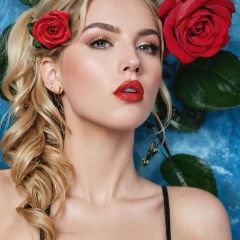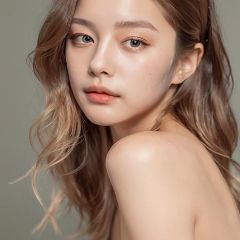FLUX AI has ushered in a new era of AI-driven image generation. It resonates with unrivaled realism, often outpacing renowned counterparts. When paired with LoRA (Low-Rank Adaptation) models, it opens a vast canvas of creativity for artists and enthusiasts. This all-inclusive guide will mentor you in harnessing the power of LoRA with FLUX AI. It comes packed with in-depth instructions, essential resource links, and industry's best practices. Let's dive in.Load More



Understanding LoRA and FLUX
LoRA, which stands for Low-Rank Adaptation, is an ingenious method that fine-tunes extensive language models without necessitating a complete retraining of the model. When utilized with FLUX AI, a product of Stability AI renowned for creating incredibly detailed and lifelike images, LoRA can tweak the foundational FLUX checkpoint to create specific styles, characters, or artistic effects. This perfect fusion allows users to amplify the abilities of FLUX and customize its output to align with their specific requirements.Load More
Software Setup
To use LoRA with FLUX AI, you’ll need to set up the appropriate software environment:
- Install SD Forge WebUI, which offers excellent support for FLUX AI models and LoRAs.
Download: https://github.com/lllyasviel/stable-diffusion-webui-forge - Download FLUX AI model:
https://huggingface.co/lllyasviel/flux1-dev-bnb-nf4/tree/main - Download FLUX VAE:
https://huggingface.co/black-forest-labs/FLUX.1-schnell/tree/main - For easier management of Stable Diffusion installations, consider using StabilityMatrix:
https://github.com/LykosAI/StabilityMatrix - You may need 7-Zip for extracting files:
https://www.7-zip.org/download.html
Ensure you have a compatible GPU with at least 8GB of VRAM (16GB or more is recommended for optimal performance).
Detailed Steps for Using LoRA Models with FLUX AI
Step 1: Obtaining LoRA Models
- Visit Civitai: https://civitai.com/
- Use the search filters to find FLUX-compatible LoRA models.
- Look for LoRAs tagged with “FLUX” or mentioned in the description as compatible with FLUX AI.
- Download your chosen LoRA models. They typically come as .safetensors or .pt files.
Step 2: Installing LoRA Models
- Locate the Installation Directory: Find the directory where your SD Forge WebUI is installed.
- Navigate to the LoRA Folder: Open the path
webui/models/Lora. - Create a Subfolder for Organization: Inside the LoRA folder, create a new subfolder called "Flux" to keep things organized.
- Move the LoRA Files: Place the downloaded LoRA files into the newly created "Flux" subfolder.
Step 3: Generating Images with LoRA in Forge WebUI
- Open SD Forge WebUI: Launch the WebUI and head over to the "Stable Diffusion" tab.
- Select a Checkpoint: In the "Checkpoint" dropdown, choose the FLUX checkpoint (recommended: flux1-dev for best quality).
- Access LoRA Section: Scroll down to the "LoRA" section in the interface.
- Add the LoRA Model: Click "Add LoRA" and select your desired LoRA model from the dropdown list.
- Adjust LoRA Weight: Use the weight slider to set the LoRA effect (usually between 0.5 and 1.0 for optimal results).
- Enter a Text Prompt: In the prompt box, write the text you want for the image. If specified, include the LoRA trigger word from the model’s documentation.
- Set Image Parameters: Choose the image dimensions, sampling method, and steps.
- Generate the Image: Once everything is set, click "Generate" to create the image with the LoRA applied.
Advanced LoRA Usage Techniques
Combining Multiple LoRAs
- Add multiple LoRAs in the WebUI’s LoRA section.
- Adjust each LoRA’s weight to balance their effects.
- Experiment with different combinations for unique styles.
Using LoRA with Negative Prompts
- Use the "Negative prompt" box to describe elements you want to exclude.
- LoRA models can be applied to negative prompts by setting them with negative weights.
Fine-tuning LoRA Effects
- Adjust the LoRA weights to control the intensity of the effect.
- Use the "CFG Scale" slider to fine-tune how closely the image sticks to your prompt.
- Experiment with different sampling methods (e.g., Euler a, DPM++ 2M Karras) to see which works best for your LoRA model.
Popular FLUX LoRAs and Their Uses
You can find these and other FLUX-compatible LoRAs on Civitai: https://civitai.com/
- Flux Disney: Ideal for creating Disney-style animated characters.
- Trigger word: “flux_disney”
- Recommended weight: 0.7–0.9
2. Flux Realism: Enhances the already impressive realism of FLUX.
- Trigger word: “flux_realism”
- Recommended weight: 0.6–0.8
3. Flux Yarn Art: Creates a unique textured, handcrafted look.
- Trigger word: “flux_yarn”
- Recommended weight: 0.8–1.0
4. Flux Aquarell Watercolor: Produces beautiful watercolor-style images.
- Trigger word: “flux_watercolor”
- Recommended weight: 0.7–0.9
Prompting Techniques for FLUX and LoRA
- Start with a clear subject description.
- Add details about style, lighting, and composition.
- Include the LoRA trigger word if specified.
- Use artistic terms to guide the style (e.g., “impressionist”, “photorealistic”).
Example prompt:
“A hyper-realistic portrait of a young woman, flux_realism, wearing a vintage floral dress, soft smile, standing in a sunlit garden, depth of field, professional photography”
Troubleshooting Common Issues
- LoRA not affecting the image:
- Check if the LoRA is properly loaded in the WebUI.
- Increase the LoRA weight.
- Ensure you’re using the correct trigger word.
2. Out of memory errors:
- Reduce image size or batch count.
- Try using half-precision (fp16) mode.
- Close other memory-intensive applications.
3. Unexpected results:
- Check for conflicting elements in your prompt.
- Try adjusting the CFG scale.
- Experiment with different sampling methods.
Training Your Own FLUX LoRA
For advanced users interested in creating custom LoRAs:
- Prepare a dataset of 15–30 high-quality images representing your desired style or subject.
- Create corresponding text files with detailed descriptions for each image.
- Use the kohya_ss GitHub repository for LoRA training scripts:
https://github.com/bmaltais/kohya_ss - Edit the configuration file to specify your dataset folder, learning rate, and training steps.
- Run the training script and monitor the loss values to prevent overfitting.
For Mac users setting up the training environment:
- Python 3.10: https://www.python.org/downloads/
- Git: https://git-scm.com/download/mac
Best Practices for LoRA Training and Usage
- Use a diverse dataset to create versatile LoRAs
- For character LoRAs, include various poses, expressions, and outfits.
- Start with a lower learning rate (e.g., 1e-4) and increase if needed.
- Test your LoRA with different weights and prompts to understand its full capabilities.
- Share your LoRA with the community and gather feedback for improvements.
By mastering the use of LoRA models with FLUX AI, you can push the boundaries of AI-generated art. Whether you’re aiming for ultra-realism, stylized illustrations, or unique artistic effects, the combination of FLUX and LoRA provides a powerful toolkit for bringing your creative visions to life. Experiment, explore, and enjoy the endless possibilities this technology offers.Remember to always download software from official sources and be cautious when installing third-party tools. Also, make sure your system meets the minimum requirements for running these applications, especially in terms of GPU capabilities for AI image generation.




